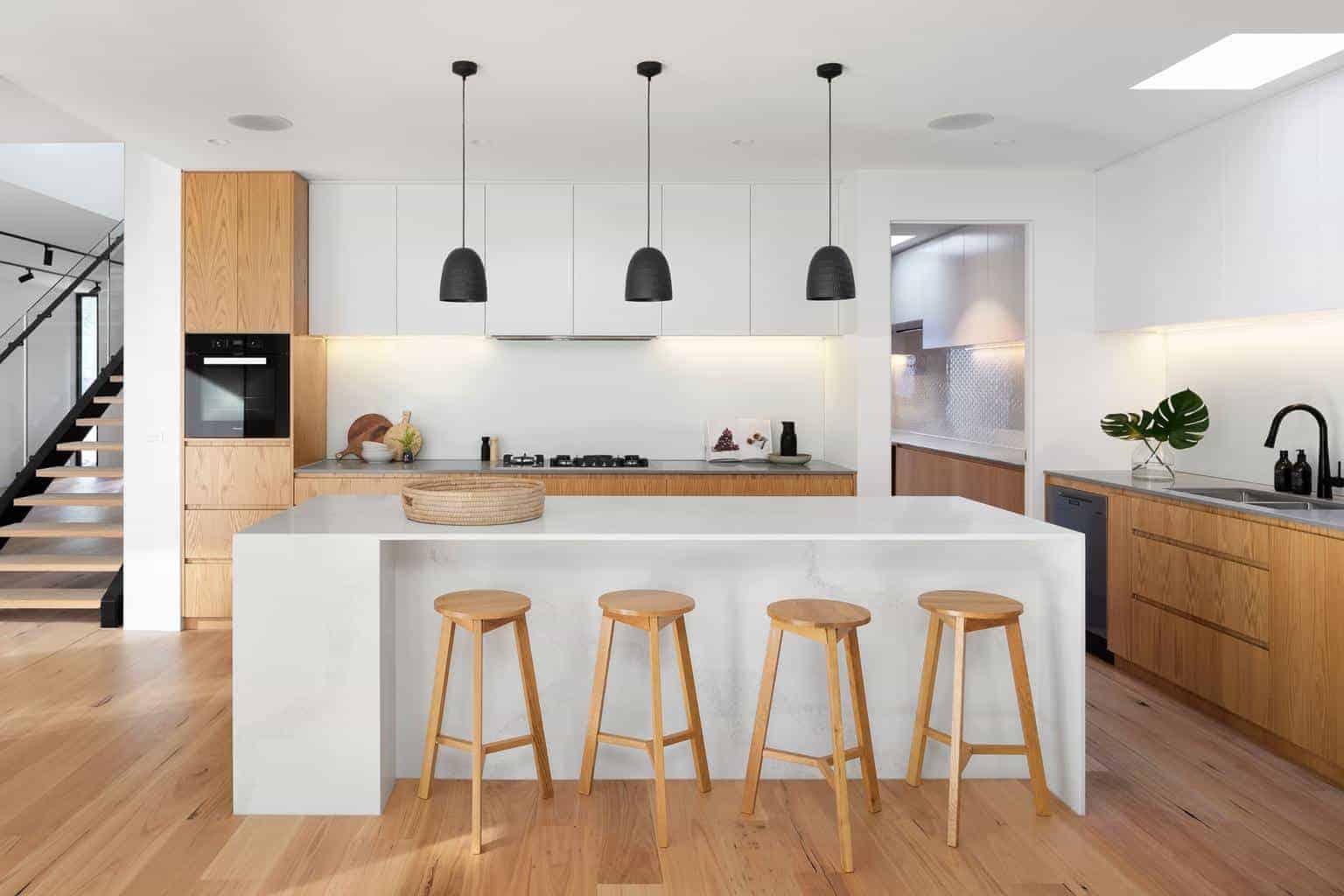You dream of renovating your home but can’t afford the costs out of pocket. A construction loan is an option to fund the project even if you don’t have a ton of equity in your home, but is it most ideal? Not necessarily.
Read on to learn more about how construction loans work, why they’re not always the best option for a remodel and why an alternative may be more ideal.
What Is a Construction Loan?
A construction loan caters to individuals who want to build a home from scratch. However, they’re also used for home renovation projects that are large in scope.
How Do Construction Loans Work?
Unlike traditional mortgages, construction loans are short-term loans accompanied by steep fees and interest rates. Furthermore, the funds aren’t disbursed in a lump sum when you’re approved. Instead, the contractor working on the project will receive installment payments throughout the project. This process is referred to as a progressive drawdown.
The contractor must make a request for a draw and meet specific requirements before the funding request is approved. This usually entails inspections, several signatures and, in some cases, mechanic lien waivers, which means it could take up to a week or longer for the contractor to get paid.
Construction loans are generally converted into a permanent mortgage when the project is complete.
Understanding the Need for Remodel Loans
Traditional mortgages or loans may not cover these expenses when you want to remodel or finance a home addition. This is where construction loans come into play. They help finance the construction and renovation of a property, covering costs such as land, contractors, building materials, and permits.
Types of Construction Loans for Remodels
There are two common types of construction loans available for remodels:
- Construction-to-permanent loans: These loans convert to a traditional mortgage after completing the construction project. They’re suitable for borrowers who have a clear plan and timeline for the remodel.
- Stand-alone construction loans: These are short-term loans that must be paid off or refinanced once the project is finished. They’re suitable for borrowers who plan to sell the remodeled property quickly or those who may not qualify for construction-to-permanent loans.
How to Qualify for a Construction Remodel Loan
To qualify for a construction remodel loan, you generally need to meet specific requirements:
- Good to excellent credit: Lenders usually require a credit score of at least 680.
- Stable income and employment history: This helps ensure you can repay the loan.
- Low debt-to-income (DTI) ratio: Lenders typically look for a DTI below 45 percent.
- Detailed project plan: Lenders need to see a comprehensive plan for your remodel, including contractor bids, timelines and estimated expenses.
Applying for a Construction Loan for Remodels
Below is a step-by-step guide that breaks down how to apply for a construction remodel loan:
- Research lenders: Start by researching various lenders and their construction loan offerings to find the best match for your remodeling project.
- Gather necessary documentation: Prepare documents such as your income, employment history, credit report and project plan.
- Submit your application: Once you’ve chosen a lender, submit your application along with the required documents.
- Work with the lender: If your application is approved, coordinate with your lender to ensure a smooth construction process and on-time payments to contractors. After the project is completed, the loan may need to be converted to a traditional mortgage or refinanced, depending on the type of construction loan you choose in the initial stages.
Can a Construction Loan Be Used for Remodeling?
Although it’s not their intended use, construction loans can be used to finance home renovations. Homeowners sometimes prefer these loans over other forms of financing because they’re based on the home’s after-renovation value, which increases your borrowing power.
Questions You Should Ask First When Getting Home Remodeling Financing
Do You Have Home Equity?
Before considering a construction loan for your remodel, think about the amount of home equity you have. Home equity refers to your house’s current market value minus your mortgage’s outstanding balance. If your property has gained significant value, you may be able to leverage that equity to finance your remodel with a home equity loan or a home equity line of credit (HELOC). These options can sometimes offer better interest rates than a construction loan.
How Are Your Finances and Do You Have a Good Credit Score?
Evaluate your financial situation and credit score. A higher credit score will make it easier for you to apply for a construction loan for remodeling. If your credit score is on the lower end, consider taking steps to improve it, such as paying off any outstanding debts, before applying for a construction loan. Also, be mindful that lenders will evaluate your income, assets, and existing debts to determine your eligibility.
Are You Buying a Fixer-Upper?
If you’re purchasing a property that requires significant renovation, consider looking into a specialized type of loan called a renovation loan. This type of loan can be more suitable than a construction loan, as it allows you to include the purchase price of the property and the cost of renovations within a single loan. Examples of these loans include the FHA 203(k) loan and the Fannie Mae HomeStyle Renovation loan.
Do You Need the Funds Immediately?
Timelines are vital when choosing the right financing option for your home remodel. Construction loans disburse funds according to a predetermined schedule based on project milestones. If you need the funds immediately, you might consider using credit cards or a personal loan. But beware, as these options tend to have higher interest rates. To finance a home addition, you may want to explore a HELOC that allows you to access funds as needed.
Reasons Why Construction Loans May Not Be Best for a Remodel
Are you considering a construction loan to remodel your home? Be mindful of a few significant drawbacks.
For starters, lenders have a complex draw process that can be frustrating for both the homeowner and the contractor working on the renovations. The property will be subject to several inspections during the renovation. Construction loans also require loads of paperwork to keep the project moving smoothly. Plus, loan proceeds are released incrementally as project milestones are met, which could result in delays.
You’ll also have to refinance your current mortgage if you get a construction loan. This can be costly if your current rate is low – a slight increase of one percent means several thousand dollars more paid in interest over the life of the loan.
Case in point: if you have a 30-year fixed-rate mortgage of $350,000 and the interest rate is 3.25 percent, you’ll pay $198,359.96 in interest over the life of the loan. But if the interest rate increases to 4.25 percent, you’ll pay $71,484.30 more in interest, or $269,844.26.
There’s also a significant difference in the monthly payment for principal and interest. The monthly payment for the loan with a 3.25 percent interest rate is $1,523.22. However, you’ll pay $1,721.79 per month for the loan with the higher interest rate. That’s a difference of $198.57.
Plus, the closing costs are sometimes steep as they’re based on your outstanding mortgage balance and renovation budget. To illustrate, if your current mortgage is $450,000 and your renovation budget is $150,000, you will pay closing costs on a $600,000 loan. Closing costs are usually around 3 percent, so that’s a whopping $18,000 ($600,000 * .03), compared to $4,500 ($150,000 * .03) if you only pay closing costs on the amount borrowed for renovations.
Alternative Loans for Remodeling Your House
Cash-out Refinance
A cash-out refinance replaces your existing mortgage with a new one that has a higher balance, allowing you to use the difference in cash for your remodeling project. This option is suitable if you have enough equity in your home, and it can potentially lower your interest rate. However, it involves refinancing your entire mortgage, which might extend your repayment term and increase closing costs.
FHA 203(k) Rehab Loan
The FHA 203(k) Rehab Loan is a government-backed mortgage that allows you to finance both the purchase of a fixer-upper and the cost of renovations. There are two types: the Limited 203(k), which allows up to $35,000 in renovation costs, and the Standard 203(k), which lets you borrow up to local FHA loan limits. This option is ideal for borrowers with lower credit scores or limited funds for a down payment.
Home Equity Loan
A home equity loan acts as a second mortgage and uses your home’s equity as collateral. It is best suited for projects with a fixed budget and a clear plan. With a home equity loan, you receive funds upfront and pay them back in fixed monthly installments over a predetermined term. It offers the stability of a fixed interest rate and predictable monthly payments.
HELOC (Home Equity Line of Credit)
A HELOC is a flexible borrowing option that allows you to draw funds as needed, up to a specified credit limit. This makes it ideal for remodeling projects with uncertain costs. You only pay interest on the funds you use, and the interest rate is variable. HELOCs typically have a draw period, during which you can access funds, followed by a repayment period.







